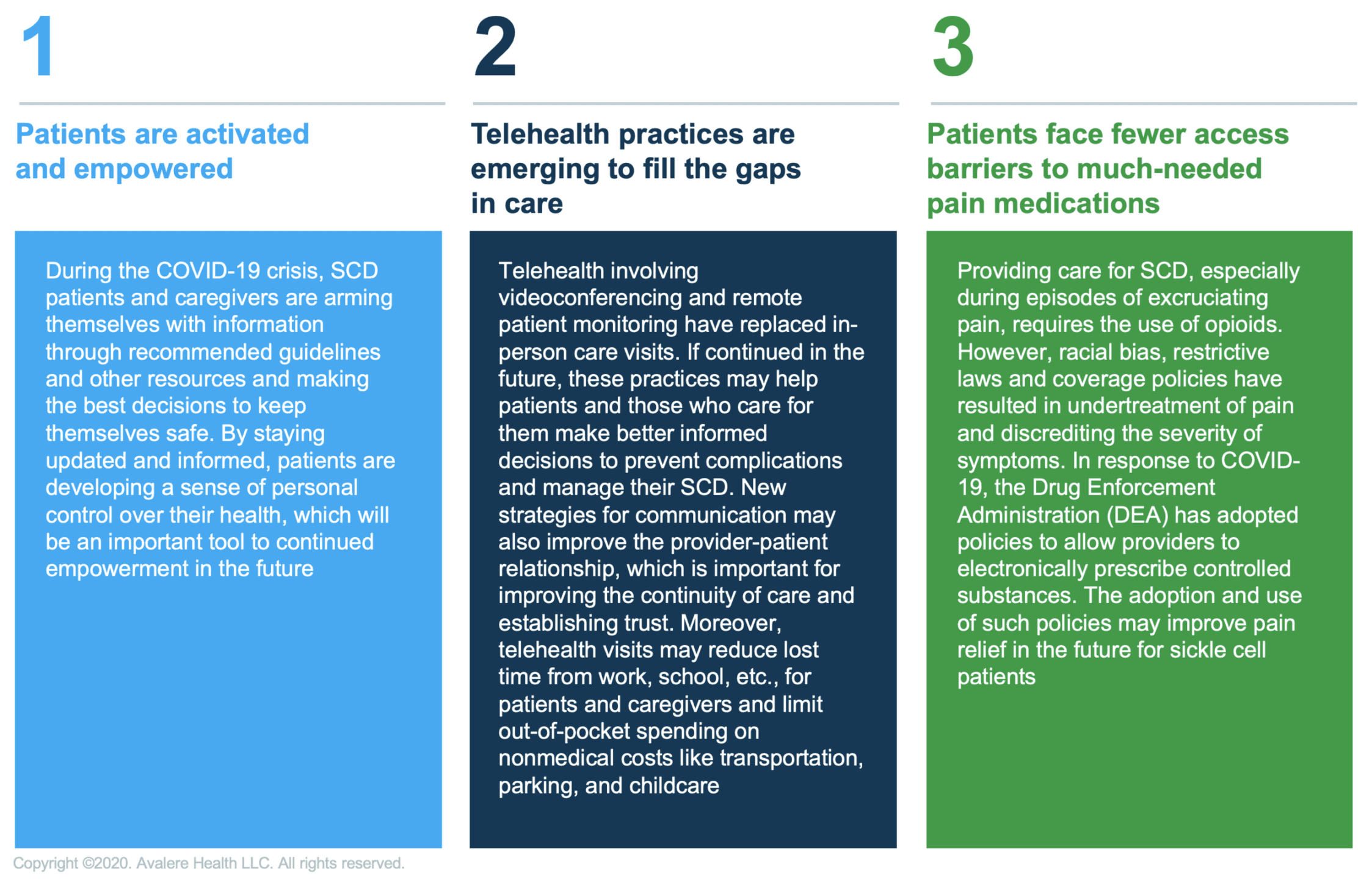Authors:
Ashley Valentine (Sick Cells), Maggie Jalowsky (Sick Cells),
Morenike AyoVaughan (Avalere Health)
Sickle cell disease (SCD) is a severe red blood cell disorder that disproportionately affects African-American and Hispanic populations.
In the United States, there are approximately 100,000 individuals living with SCD (although there is a lack of accurate reporting and the exact number is unknown). People with SCD experience a multitude of medical complications, including recurring episodes of pain crisis, acute chest syndrome, infection, stroke, neurocognitive impairment, and cardiovascular disease. These chronic complications require a wide array of medical services and care coordination. Thus, caring for SCD patients is complex from both a medical and health services perspective.
This is further exacerbated by the many disparities that plague this community. Discrimination, stigma, lack of treatment options, lack of qualified providers, and challenges with employment and insurance make living with SCD even more difficult. These gaps in care have only intensified in the time of COVID-19. The pandemic highlights the inequities that persist in the treatment of SCD and the impact they have on patients and their families.
Emerging data demonstrate that the COVID-19 outbreak disproportionately affects communities of color. For patients with SCD, these racial disparities take a toll on the community as is and are further compounded by their disease. SCD experts in practice have shared what care delivery looks like in this current environment. Common trends as they relate to SCD and COVID-19 treatment are as follows:
A case study crystalizes these issues. On April 1, Sick Cells Co-Founder, Marqus Valentine, a 36-year-old living with SCD, experienced a pain crisis caused by a leg ulcer infection. He reported chest pain and had a fever. Marqus has a history of acute chest syndrome and sepsis. Historically, his family would have called an ambulance or gone to an emergency department. During the COVID-19 outbreak, out of an abundance of caution, his SCD treatment team instructed him to stay home and treat the crisis with oral pain medications, at-home oxygen, and antibiotics since his hospital is currently a site for COVID-19 screening resulting in numerous cases being treated at that location.
While the pandemic has posed great strains on the global health system, opportunities to reduce gaps of care for sickle cell patients might emerge. Three activities providers have observed in sickle cell management due to the pandemic include:

During this challenging time, it is important for both the medical and patient communities to stay united and informed by following clinical guideline recommendations provided by organizations like the American Society of Hematology and the Sickle Cell Disease Association of America. Likewise, for the patient community, this has been an opportunity to explore new relationships with their providers and healthcare teams while also having a global pandemic shine a spotlight on existing health disparities that have weighed down the community.
This article was co-authored by Sick Cells and Morenike AyoVaughan of Avalere. Avalere is a healthcare consulting firm dedicated to improving healthcare. This article is also shared on Avalere’s website.